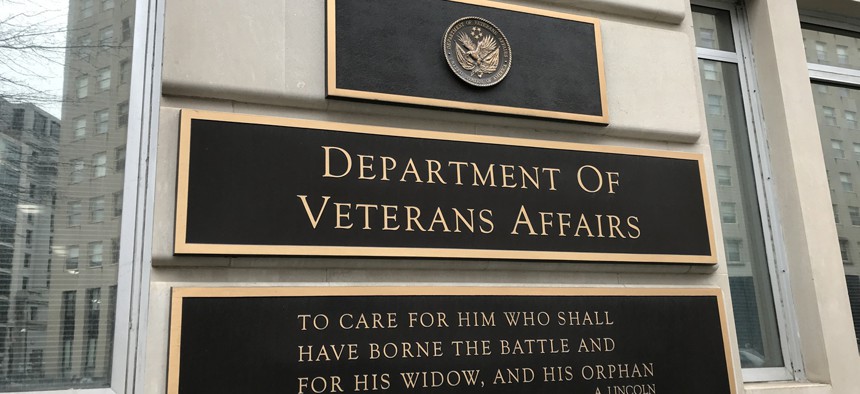
VA has explored the use of innovative suicide prevention approaches during Dr. Matthew Miller’s tenure, including further leveraging predictive algorithms, machine learning and artificial intelligence tools to better assist and support veterans in crisis. Westy72 / Getty Images
VA's suicide prevention lead departs government
Dr. Matthew Miller, the executive director for VA Suicide Prevention, has overseen efforts to explore the use of innovative solutions during his tenure.
The suicide prevention head at the Department of Veterans Affairs is leaving the agency after more than five years of service working to support veterans in crisis.
Dr. Matthew Miller, who served as executive director for VA Suicide Prevention since March 2020, announced on LinkedIn that Friday would be his his last day with the agency and the federal government.
“I depart offering my fullest support and encouragement to VA mission, leadership, and teammates,” he said. “Maintaining Veteran trust in VA services and resources is the utmost and only priority; go Team VA and Team Suicide Prevention!”
VA Press Secretary Pete Kasperowicz said in a statement to Nextgov/FCW that Miller voluntarily left the department and “will be replaced by Dr. Todd Burnett, who will serve as acting executive director for VA’s Office of Suicide Prevention (OSP) and has been a senior leader in OSP since 2022.”
VA has explored the use of innovative suicide prevention approaches during Miller’s tenure, including further leveraging predictive algorithms, machine learning and artificial intelligence tools to better assist and support veterans in crisis.
Of the 227 total AI use cases that VA included in its 2024 inventory, four of those examples were focused, in whole or large part, on identifying and supporting veterans determined to be at a heightened risk of self-harm.
One of these use cases — the Recovery Engagement and Coordination for Health-Veteran Enhanced Treatment program, or REACH VET — launched in April 2017. The suicide prediction algorithm scans VA’s electronic health records to identify veterans in the top 0.1% tier of suicide risk.
Miller and VA worked to recently launch a REACH VET 2.0 model, which incorporates new risk factors like military sexual trauma and intimate partner violence into the algorithm.
In an interview with Nextgov/FCW prior to the rollout of REACH VET 2.0, Miller said the predictive approach offers “that pairing of the innovation and the technology with the human touch.” He noted that the model enhances the work of clinicians and does not replace human interventions.
The department also launched the Mission Daybreak challenge in May 2022 to support innovative solutions focused on reducing veteran suicides. VA has awarded millions of dollars to winning organizations through the program, which has helped to support internal veteran crisis services and external groups directing resources and assistance to those at risk of self-harm.
During a media roundtable in February 2023, Miller said Mission Daybreak supports VA’s broader suicide prevention efforts because it “brings clinical, community, policy and research backgrounds, in context, into innovation and then redeploys innovation back into clinical, community, policy and research settings across the nation and around the world.”
Prior to his role leading VA’s suicide prevention efforts, Miller served as national director of the Veterans Crisis Line from 2017 to 2020. An Air Force veteran, Miller first began his VA career as chief of mental health at the Saginaw VA Medical Center, and then later deputy chief of staff at the same facility.
If you have a tip you'd like to share, Edward can be securely contacted at Grahed.40 on Signal.
NEXT STORY: Bipartisan senators call for CDC oversight following firing of agency’s director







